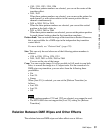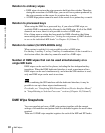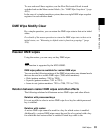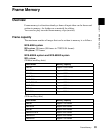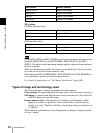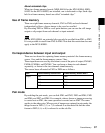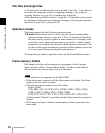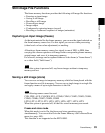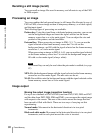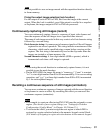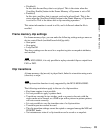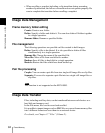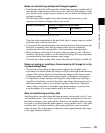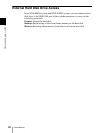
89Frame Memory
Chapter 1 MVS-8000 Functions
Still Image File Functions
The frame memory functions provides the following still image file functions.
• Freezing an input image
• Saving a still image
• Recalling a still image
• Processing an image
• Image output
• Continuously capturing images (record)
• Recalling a continuous sequence of images (animation)
Capturing an input image (freeze)
As the input material for the frame memory, you can use the signal selected on
the frame memory source bus. For this signal you can use video processing
(video levels or hue value adjustment) or masking.
Allocating a frame memory source bus signal to one of FM1 to FM8, then
carrying out a freeze captures a still image in the corresponding frame memory
output image, and saves it in temporary memory.
For a freeze, an image can be captured either as video frame (a “frame freeze”)
or a video field (“field freeze”).
Note
When the system is powered off, any freeze images written to temporary
memory are lost.
Saving a still image (store)
You can save an image in temporary memory which has been placed with the
freeze function as a file in memory. You can save a single image in a single file
and apply a name of up to eight characters to the file.
Note
The following names cannot be used:
CON, PRN, AUX, CLOCK$, NUL, COM0, COM1, COM2, COM3, COM4,
COM5, COM6, COM7, COM8, COM9
LPT0, LPT1, LPT2, LPT3, LPT4, LPT5, LPT6, LPT7, LPT8, LPT9
When the system is powered off, all the files saved in memory are erased.
Freeze and store mode
When this mode is set to On, the freeze and store operations occur
simultaneously. You can set it to On in the Frame Memory >Still >Freeze/Store
menu (see page 498).
This function is not supported on the MVS-8000.



